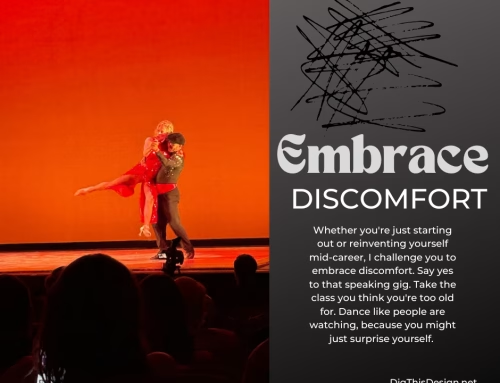Do you love design and the arts? Do you spend hours per week checking out blogs, sites, publications or TV shows about creative topics? Our common love for all things creative often gives us a yearning feeling for wanting to partake in the fun, but what may be a reason for having such a hard time actually putting design concepts together in a space?

Thinking through mental images rather than words, or “visual thinking” as it is often referred, is a thinking style that only some of the world’s population uses. This is not a rare type of mind, nor is it an exclusive way to think; many people have different combinations of thought processes and learning styles. Throughout my experiences of working with clients on their interior design projects, there are always some that understand plans in a visual/spatial way. Meanwhile, their partner might be very lost throughout the process, unable to translate what the line representation on paper will really look like as a finished product in the real world. There doesn’t seem to be any rhyme or reason as to why some people can visualize a space and others cannot. It doesn’t seem to be attributed to things like age or gender, so perhaps it is the way our brains are wired.
In learning about the way our brains work, you start to realize how complex that organ is; it’s amazing! It is never really a black and white world, there are a lot of gray areas as to how people learn, think, and what abilities they hold. According to a paper from Johns Hopkins University, “spatial ability is the capacity to understand and remember the spatial relations among objects. Spatial ability is not a monolithic and static trait, but made up of numerous subskills, which are interrelated among each other and develop throughout your life. “
The frustration that comes about from drawing a blank when you want to paint your room is completely understandable and not your fault. You may say you want a yellow room, but after it’s done you might realize that the color makes you queasy. What you actually wanted out of that color was a particular feeling, but that’s not the easiest thing to translate and visualize onto a wall. An easy solution is collaborative thinking with a professional who visualizes plans and design concepts on a day to day basis. Interior designers who are great at what they do know what questions to ask in order to figure out a space you will love.
In a Cornell University study by Kenneth Heilman and the team at Department of Neurology and Neuroscience, they found a physical characteristic in the brains of creative types. The bundle of brain fibers between the two hemispheres of the brain was smaller and attributed to the cause for each side of the brain being able to develop individually. They also found that those individuals showing a smaller corpus callosum were more sensitive to emotions and memory, which play a role in those flashes of creative inspiration. It is true that people can learn creativity to some extent and that the environment plays a huge role in how creative people express themselves, but basically, this all comes about from our genetic makeup. So relax, we are all born with our own talents and that’s what makes it ALL work!
Images Courtesy of Canva.





